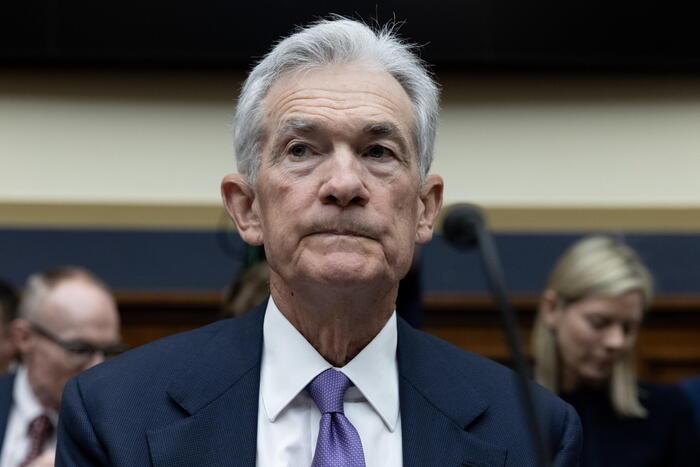Enlarge image
Life is getting more expensive, inflation rates are rising
Photo: Jim Dyson / Getty Images
We are facing a rough winter.
Energy is more expensive than it has been in a long time, and the price of gas is at a record level.
In Great Britain, a number of energy suppliers are already going bankrupt, which have been surprised by the high purchase prices.
Production bottlenecks hamper the economy, workers are sent home because of a lack of materials even though the order books are full.
Life is getting more expensive, inflation rates are rising.
A highly uncomfortable general economic climate has been brewing.
Instead of an exuberant post-Covid boom that would have marked the delayed beginning of the golden 2020s, the upswing seems to be running out of breath again before it really started.
The tension was already foreseeable more than a year ago.
But the current severity of the rashes is surprising.
Three questions arise: Are we dealing with temporary problems that will soon be resolved?
Or is this the beginning of a new era of scarcity?
And: If the latter is the case, are we facing major upheavals, for example a global financial crisis?
Standing still is not the solution
In any case, the current economic forecasts are far from scaremongering.
Whether the International Monetary Fund (IMF) or the German economic research institutes - the basic melody of the analyzes is quite optimistic.
Something like normal will return to the affluent countries next year.
The global economy will gradually overcome the supply bottlenecks.
The prices for energy and other raw materials will fall significantly.
Inflation is falling, growth is picking up.
More and more people are going back to work: The employment rates, which are currently still below pre-Corona levels, should finally normalize.
When winter is over, a mild spring begins.
That is the dominant economic story at the moment.
Then we can finally turn to the big tasks: the conversion towards climate neutrality, consistent digitalization, and the reduction of the public investment backlog.
There is certainly enough to do.
(Watch out for water level reports from the future traffic light coalitionists this week.) A continued upturn would help.
After all, standing still is not a solution.
The story of the spring recovery is currently also seen as a guideline for economic policy.
Central bankers, especially the leaders of the European Central Bank (ECB), are putting some effort into being able to "see through" the current situation.
Since they cannot change any short-term distortions in the markets anyway, they try to assess the medium-term prospects.
And they still consider them to be rosy in principle.
Immediate pressure to act?
Rather not.
While the central banks in Great Britain and the USA are getting ready to gradually tighten the reins of monetary policy - and other western central banks have already taken their first steps - the ECB is being decidedly relaxed.
The federal government that is still in office is also behaving rather passively in view of the rapidly rising energy prices, while the governments in France, Italy and Spain are trying to cushion the effects of inflation on citizens.
No trace of unrest
The most important indicator that the current tensions are temporary are longer-term inflation expectations. The ECB, for example, regularly asks economists how they assess future price developments in the euro zone. The values have risen somewhat recently, but there is no sign of unrest: Most of those surveyed believe that the increase in consumer prices will be less than two percent in the next year and the year after next. Only a fifth of the experts surveyed see inflation rates between two and three percent rising.
There is nothing to be seen in the surveys that inflation is galloping away.
Over a five-year perspective, the respondents also expect rates of 1.8 percent on average.
This roughly corresponds to the target set by the central banks, which are aiming for rates of two percent.
Bets on the financial markets on future inflation rates confirm the experts' assessments.
In the US, the comparative value is now 2.3 percent, as the Federal Reserve Bank of St. Louis has determined.
This, too, is by no means unusual: The figures are roughly the average for the past ten years.
Inflation expectations are still "well anchored", as central bankers call it.
So everything is unproblematic?
In fact, the currently measured inflation is significantly higher: In the US, the annual rate of increase was last at 5.4 percent, in the euro zone 3.4 percent (watch out for new numbers Wednesday), in Germany alone at 4.1 percent . It's true: Much of this rapid increase can be explained by a static effect; in the same period last year, prices were exceptionally low due to the pandemic. The rushing energy costs can in part be explained by the fact that the strength of the recovery surprised producers and utilities. The same could apply to the currently acute delivery bottlenecks, which the Ifo Institute has now also identified for the retail sector. All of this could recede once the global supply has adapted to the increased demand.Then the price dynamics should also calm down.
But what if not?
Then some very ugly surprises threaten.
A global turnaround
The stock exchanges are not very good at predicting coming crises.
Economic researchers also find it difficult to predict radical turning points.
Perhaps we are currently on such a threshold.
In any case, the calming story of the spring recovery contradicts some structural shifts that we will have to deal with for the foreseeable future:
Demographic change is noticeably reducing the potential of the workforce, not only in Europe.
This gives workers and unions more bargaining power.
If the cost of living rises, they should be able to implement reasonable wage increases quickly.
Globalization is on the decline.
The formerly almost limitless markets are crisscrossed by new trade restrictions.
A consequence of this development is that companies are now complaining about supply bottlenecks that are increasingly paralyzing production.
The fight against climate change is likely to result in green inflation.
If the emission of climate-damaging gases is subject to ever higher taxes, if more and more areas of the economy are affected and if, in addition, EU climate tariffs increase the price of imports from countries that produce more exhaustively, then this will have an impact on the cost of living as a whole.
Fundamental factors that herald a U-turn compared to the development of the past decades.
We have got used to an almost inexhaustible globalized supply of goods.
The integration of more and more employees into the global economy and into the domestic labor market dampened wage developments.
Energy was comparatively cheap, although we knew that warming the atmosphere would require decisive action.
All of this kept inflation down.
But that's history.
How well the central banks can keep price dynamics under control even under changed conditions is an open question.
"Dangerous Serenity"
Viewed from this perspective, inflation expectations that have been relaxed so far are cause for concern.
A whole universe of securities is built on the expectation of permanently low inflation rates and interest rates.
The debts of the states, but also that of companies and private individuals, are correspondingly high in many countries.
Larry Summers, the former US Treasury Secretary, spoke of "dangerous serenity" back in May.
Everyone would underestimate the inflationary dynamic.
But at some point the central banks couldn't help but tighten the reins: reduce bond purchases, raise interest rates.
And this belated change of direction will get the financial markets off the beaten track, said Summers.
Presumably the consequence: the next financial crisis.
This scenario seems to be moving closer.
The more the indications that the price dynamics are solidifying, the less convincing the story of the imminent normalization - the more unrealistic the currently low inflation expectations appear.
Economic policy must now manage a "delicate balancing act," wrote the IMF recently in its report on global financial stability.
Central banks and governments would have to put on the brakes, but they should do it gently so that a crash is prevented.
Occasionally, however, balancing acts end tragically: with a crash.
The main economic events of the week ahead
Open assembly area
Beijing -
stuttering economy
- China's statistical office presents figures on economic growth in the third quarter.
The harsh interventions in more and more industries by the communist leadership, the crisis of real estate developers, the real estate crisis and increasing energy shortages could have slowed down the dynamism.
Luxembourg -
Below expectations
- The EU statistics agency Eurostat publishes key figures on economic performance.
Expand Tuesday area
Brussels -
New rules again
- The EU Commission wants to announce how it envisions the upcoming reform of the budget
rules
for the member states.
It would be the third major change to the Stability and Growth Pact since monetary union began in 1999.
Reporting season I
- Business figures from Deutsche Börse, Danone, Ericsson, United Airlines, Procter & Gamble, Johnson & Johnson, Bank of New York Mellon, Netflix.
Expand Wednesday area
Luxembourg -
Inflation in Europe
- Eurostat presents new figures on the development of consumer prices.
Reporting season II
- business figures from Satorius, Kühne & Nagel, Nestlé, Akzo Nobel, Roche, IBM, United Airlines, Verizon.
Expand Thursday area
Brussels -
With Power
- NATO Defense Ministers' Meeting (until Friday).
On the agenda are, among other things, the processing of the Afghanistan mission and the revision of NATO's strategic concept.
Reporting season III
- business figures from SAP, L'Oréal, Hermes, Vivendi, Randstad, ABB, Unilever, Barclays, Anglo American, AT&T, Dow, Intel
Open area Friday
Berlin -
green and loud
- protest actions by the climate protection initiative “Fridays for Future” with the motto “You don't leave us a choice”, while a new government coalition is forming that wants to put climate protection at the center of its work.
Reporting Season IV
- Business figures from Air Liquide, Renault, Whirlpool, London Stock Exchange, Schlumberger, American Express.








